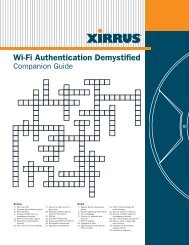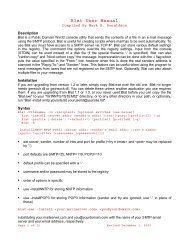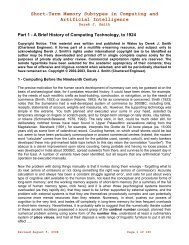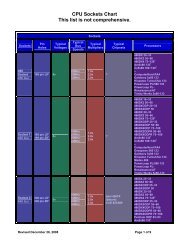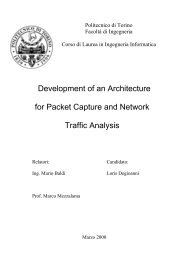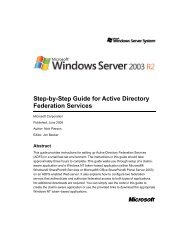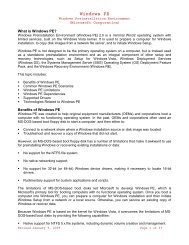A History of Viruses.pdf - Bandwidthco Computer Security
A History of Viruses.pdf - Bandwidthco Computer Security
A History of Viruses.pdf - Bandwidthco Computer Security
Create successful ePaper yourself
Turn your PDF publications into a flip-book with our unique Google optimized e-Paper software.
A <strong>History</strong> <strong>of</strong> <strong>Viruses</strong><br />
By 1992, the prevalence <strong>of</strong> Windows had led to a shift in these numbers. While boot sector<br />
infectors coexisted peacefully with Windows 3.1, file infectors tailored to the DOS environment<br />
frequently crashed their hosts before they had a chance to spread effectively.<br />
As a result, the inception <strong>of</strong> a large Windows-based computing community led to a decline in<br />
wild sightings <strong>of</strong> infector viruses, while the incidence rate for boot-sector infectors continued to<br />
increase.<br />
As well as encouraging the decline <strong>of</strong> file infectors, the new, feature-rich Windows platform<br />
created a niche for a distinct category <strong>of</strong> malware: the macro virus.<br />
A macro is a collection <strong>of</strong> user commands which can be stored and run as a group. Usually,<br />
macros are meant for automating repetitive tasks within a particular application (ie, search for<br />
instances <strong>of</strong> the word "abc" and replace with "xyz".) In the case <strong>of</strong> a macro virus, this language<br />
is used to create the routines which allow the macro virus' instructions to spread to and infect<br />
other documents.<br />
The first reported macro virus, "Concept", was seen in the wild by AV researcher Sarah Gordon<br />
in summertime <strong>of</strong> 1995. A set <strong>of</strong> five macros designed only to replicate, Concept's payload<br />
displays the virus author's ominous message: "That's enough to prove my point".<br />
These viruses exploited a new channel between users: document sharing. Until the inception <strong>of</strong><br />
macro viruses, users could only spread viral infections via bootable diskettes or infected<br />
programs. By infecting data files, Concept and its descendents were able to leverage the fact<br />
that most users tend to exchange documents much more prolifically than they exchange<br />
programs.<br />
In late July, 1996, Gordon received a wild copy <strong>of</strong> another macro virus, this time for MS Excel.<br />
Dubbed "XM.Laroux", it exploited the same type <strong>of</strong> macro language in which Concept was<br />
written, but it worked in MS Word's number-crunching cousin. Now spreadsheets, too, could<br />
contain harmful malware.<br />
Again, the increasing tendency <strong>of</strong> users to exchange documents as part <strong>of</strong> their everyday work<br />
allowed this virus to spread. Moreover, by exploiting the emerging trend toward<br />
interoperability, the macro virus broke down the barriers between different computing<br />
platforms. A macro virus infecting a Micros<strong>of</strong>t Word or Excel document on a PC could now<br />
http://www.securityfocus.com/print/infocus/1286 (4 <strong>of</strong> 6) [7/27/2008 2:00:14 PM]



